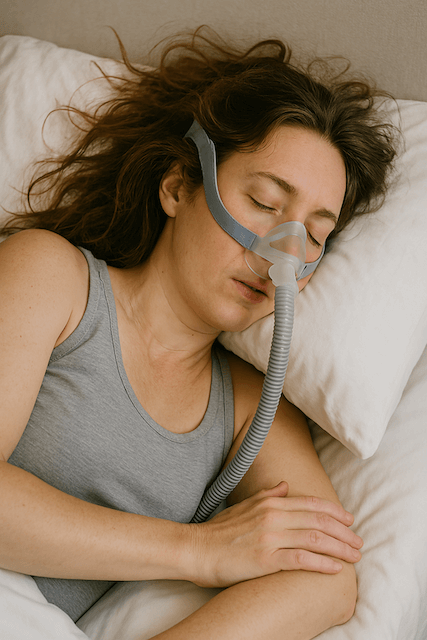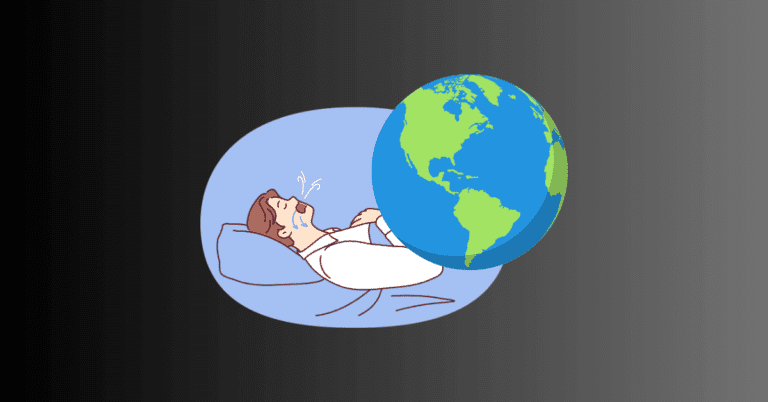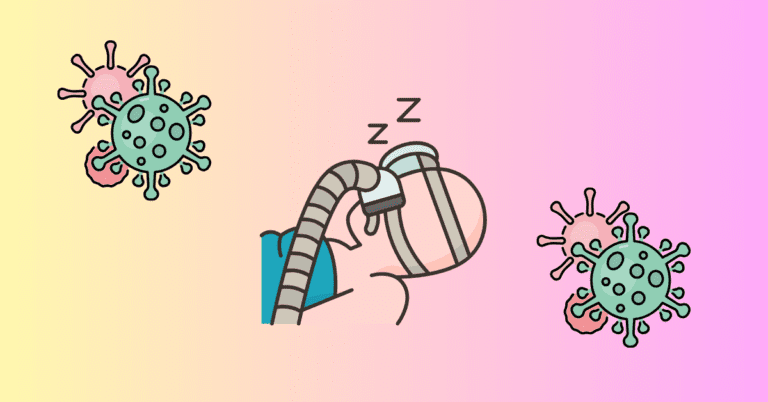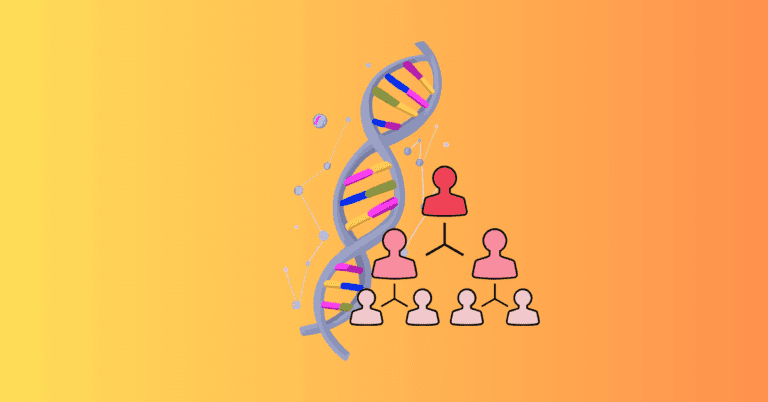Aerophagia and Sleep Apnea: The Causes and Solutions
Jeremy Smith is a long-term CPAP user and sleep apnea advocate. After being diagnosed with severe obstructive sleep apnea, he created ByJeremySmith.com to help others navigate CPAP therapy through personal stories, gear reviews, and practical advice.
Aerophagia is the medical term for swallowing air, which can lead to uncomfortable symptoms like bloating, gas, and abdominal discomfort.
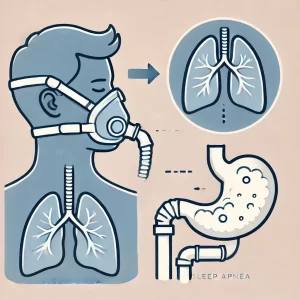
For individuals using CPAP (Continuous Positive Airway Pressure) therapy to treat sleep apnea, aerophagia can be a frustrating side effect.
While CPAP is highly effective at keeping the airway open during sleep, some users may find themselves swallowing air unintentionally, which can lead to discomfort.
This article will explore aerophagia, why it occurs, and how to manage it effectively using CPAP therapy.
Have a look at this video from Jason at https://axgsleepdiagnostics.com/ who gives a good explanation of aerophagia.
What Is Aerophagia?
Aerophagia occurs when a person swallows excessive air, which becomes trapped in the digestive tract and leads to bloating, gas, and discomfort.
This can happen while eating or drinking too quickly, talking a lot, or, in the case of sleep apnea, while using a CPAP machine.
People with aerophagia may experience symptoms such as:
- Bloating or a feeling of fullness in the abdomen.
- Belching or frequent burping.
- Gas or flatulence.
- Abdominal discomfort or cramping.
While aerophagia itself is not dangerous, it can be uncomfortable and, if not addressed, may interfere with the effectiveness of sleep apnea treatment.
How Does CPAP Therapy Cause Aerophagia?
For individuals using CPAP therapy to manage sleep apnea, aerophagia can occur when air intended to keep the airway open is instead swallowed and enters the stomach.
This typically happens when the air pressure from the CPAP machine is too high or when the user breathes in a way that allows air to enter the esophagus rather than the airway.
Here’s how CPAP therapy can lead to aerophagia:
1. Air Pressure Too High
If the CPAP machine’s air pressure is set too high, it can force air into the esophagus, causing it to be swallowed instead of going down the respiratory tract. This excess air ends up in the stomach, leading to bloating and discomfort.
2. Improper Breathing Patterns
Some people may have difficulty adjusting to CPAP therapy and develop improper breathing patterns, such as breathing through the mouth or swallowing air while breathing. This can lead to more air entering the digestive system instead of the lungs.
3. Mask Fit Issues
A poorly fitting CPAP mask can cause leaks, which may lead to users swallowing air while trying to adjust their breathing. A mask that doesn’t seal properly may also result in higher air pressure as the machine works harder to compensate for leaks, increasing the risk of aerophagia.
3. Symptoms of Aerophagia During CPAP Use
For people using CPAP therapy, the symptoms of aerophagia can range from mild to severe. Common symptoms include:
- Bloating and fullness: A feeling of pressure or fullness in the stomach, especially upon waking.
- Excessive belching: Frequent burping after using the CPAP machine.
- Abdominal pain or cramps: Discomfort or cramping due to trapped air in the stomach or intestines.
- Flatulence: Passing gas more frequently after using CPAP.
These symptoms can interfere with sleep quality and make it difficult to continue CPAP therapy, especially if they occur regularly.
How to Prevent and Manage Aerophagia
While aerophagia can be uncomfortable, there are several strategies you can use to prevent and manage it effectively while continuing CPAP therapy. Here are some practical solutions:
1. Adjust CPAP Pressure Settings
One of the most common causes of aerophagia is air pressure that’s too high. If you’re experiencing symptoms, talk to your doctor or sleep specialist about adjusting the pressure settings on your CPAP machine. BiPAP (Bilevel Positive Airway Pressure) machines, which offer two pressure levels—one for inhalation and one for exhalation—can also help reduce the risk of aerophagia.
2. Use a Ramp Feature
Many CPAP machines have a ramp feature, which gradually increases the air pressure to your prescribed level over time, allowing you to fall asleep more comfortably. This can help prevent swallowing air when the pressure feels more intense at the beginning of the night.
3. Practice Breathing Techniques
Learning to breathe correctly while using CPAP can help reduce the risk of aerophagia. Try to focus on nasal breathing rather than mouth breathing, as this can help direct air into the respiratory system rather than the digestive system. A humidifier attached to the CPAP machine can also help make nasal breathing more comfortable by preventing dryness.
4. Check Your Mask Fit
A well-fitting CPAP mask is essential for preventing air leaks and minimizing the risk of aerophagia. Make sure your mask is the correct size and creates a good seal around your nose and mouth. If you’re struggling with leaks, talk to your sleep specialist about trying a different type of mask or using CPAP mask liners to improve the fit.
5. Consider Sleeping Position
Your sleep position can affect how air flows into your airway and digestive tract. Sleeping on your side may help prevent air from entering your esophagus and reduce the risk of aerophagia. Side sleeping also reduces the chances of airway collapse, making it a good position for managing obstructive sleep apnea.
5. When to Talk to Your Doctor
If you continue to experience frequent or severe aerophagia despite trying these strategies, it’s important to talk to your doctor or sleep specialist. They may recommend additional changes to your CPAP therapy, such as switching to a BiPAP machine or trying alternative treatments for sleep apnea, such as an oral appliance.
Your doctor may also evaluate other factors, such as your sleep position, diet, or underlying gastrointestinal conditions, that could be contributing to your aerophagia. Working closely with your healthcare provider will help you find the best solution for managing both your sleep apnea and aerophagia.
Conclusion: Managing Aerophagia and CPAP Therapy
Aerophagia can be an uncomfortable side effect of CPAP therapy, but with the right adjustments, it’s possible to manage and minimize the symptoms.
By adjusting CPAP pressure settings, practicing proper breathing techniques, and ensuring a good mask fit, you can continue to receive the benefits of CPAP therapy while reducing the discomfort of aerophagia.
If you’re struggling with aerophagia, don’t hesitate to reach out to your doctor for guidance. Finding the right balance in your treatment plan will help improve your sleep quality and overall comfort.
Thanks for reading my article on the connection between aerophagia and sleep apnea.
Disclaimer: The content on this blog is for informational and educational purposes only and is not a substitute for professional medical advice. Always speak with your doctor or sleep specialist before starting, stopping, or changing any treatment or therapy related to sleep apnea or CPAP use.


